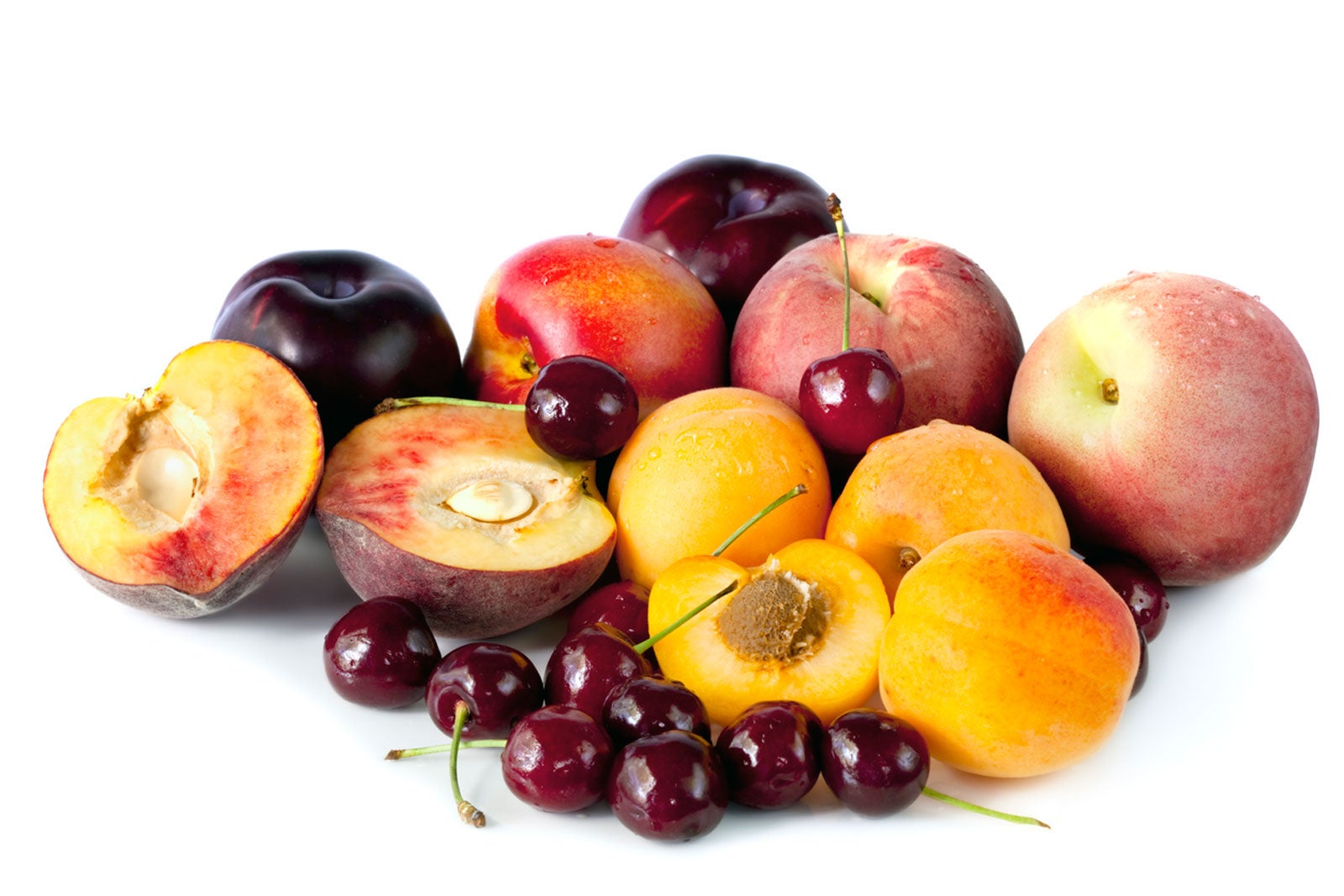Stone Fruit Varieties: Growing Stone Fruit In The Garden

You may not know it, but chances are very good you’ve had stone fruit before. There are numerous stone fruit varieties; you might even be growing stone fruit in the garden already. So, what is a stone fruit? Here’s a hint, it comes from a stone fruit tree. Confused? Read on to learn some stone fruit facts and tips on growing these fruit trees in the garden.
What is Stone Fruit?
The term ‘stone fruit’ sounds uninviting, but trust me, it contradicts the succulent, juicy fruit it’s actually in reference to. Stone fruit is the mantle under which tender fruit such as plums, peaches, nectarines, apricots, and cherries fall.
What do all of these fruits have in common? Each has a hard pit or seed inside the otherwise wonderful flesh of the fruit. The seed is so impenetrable it has come to be known as a stone.
Stone Fruit Facts
Most stone fruit varieties are native to warmer regions and are highly susceptible to winter injuries. They bloom earlier in spring than pome fruits, such as apples, and the unpredictable spring weather makes them more likely to suffer frost damage.
All this means is that growing a stone fruit tree in the garden poses special challenges for the gardener. Location is the key to the survival of the tree. It needs to be provided aeration, water drainage, and wind protection. The tree must be watched over, as it is vulnerable to a variety of insects and diseases.
Of the stone fruit varieties, peaches, nectarines, and apricots are less hardy than their cousins cherries and plums. All varieties are susceptible to brown rot disease but especially apricot, sweet cherry, and peach.
Additional Stone Fruit Tree Info
Trees can range in height from 20 to 30 feet (6-9 m.) and 15 to 25 feet (5-8 m.) across and can be grown from USDA zones 7 to 10, depending upon the cultivar. Most are rapid growers that achieve a pyramid to oval shape that can be pruned. They prefer moist, well-draining soil in full sun and are pH adaptable.
Sign up for the Gardening Know How newsletter today and receive a free copy of our e-book "How to Grow Delicious Tomatoes".
With their showy spring blooms, these types of fruit trees are often planted as ornamentals, but they produce delicious fruit too. Stone fruit has a shorter shelf life than pome fruits; however, the fruit from a stone fruit tree can be eaten fresh, juiced, or preserved for later use by either drying, canning, or freezing.

Amy Grant has been gardening for 30 years and writing for 15. A professional chef and caterer, Amy's area of expertise is culinary gardening.
